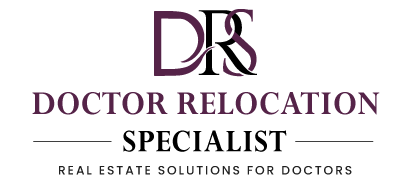Many healthcare providers find themselves needing to relocate due to practice expansion or organizational changes. This process can be daunting, but with a well-structured relocation plan, you can ensure a smooth transition for your staff and patients. In this post, you will discover effective strategies and considerations to help you create a customized moving plan that meets your unique needs, minimizes disruptions, and supports your ongoing commitment to quality patient care.

Understanding the Need for Relocation
For healthcare providers, the decision to relocate often stems from a desire to enhance operational efficiency, improve patient care, or expand service offerings. Recognizing when to make a move can significantly impact your organization’s success and sustainability in a competitive healthcare landscape.
Factors Driving Healthcare Relocation
Below are some common factors that may influence your decision to relocate:
- Increased patient volume
- Proximity to key demographics
- Access to advanced technologies
- Improved facility requirements
Recognizing these factors helps you evaluate your current situation and identify when a relocation may be the best option for your practice.
Assessing the Benefits of a New Location
Relocation can present numerous advantages, such as a more favorable environment for both patients and staff. Evaluating potential benefits allows you to align your move with strategic goals, ultimately optimizing your healthcare services.
Location is not just about geography; it reflects the community you serve and the resources available to you. By assessing the benefits of a new location, you can explore factors such as enhanced visibility, accessibility, and partnerships with local providers, leading to improved patient outcomes and business growth. This assessment ensures your move aligns with your long-term vision for success.
Assessing Your Current Infrastructure
Any effective relocation plan starts with a thorough assessment of your current infrastructure. Evaluating the existing systems, facilities, and technology used in your healthcare practice can help you identify strengths and weaknesses that need to be addressed during your move. This analysis will serve as the foundation for designing a relocation strategy that meets your specific needs and ensures a seamless transition to your new location.
Evaluating Current Facilities
An assessment of your current facilities is vital in understanding what works and what doesn’t. This includes examining the layout, space utilization, accessibility, and patient flow within your existing environment. You’ll want to identify which aspects contribute to operational efficiency and patient satisfaction, allowing you to make informed decisions when designing your ideal new facility.
Identifying Necessary Upgrades
Necessary upgrades are key to ensuring your new space is equipped for future needs and enhanced patient care. By recognizing areas where your current infrastructure may be lacking, you can prioritize improvements that will make a substantial impact on your practice. This may include updates to technology, communication systems, or even renovating physical spaces to facilitate a better patient experience.
Infrastructure plays a significant role in the overall functionality of your healthcare practice. As you identify necessary upgrades, consider how these enhancements will impact not only your operations but also patient outcomes. Upgrading technology, such as electronic health records systems or telehealth capabilities, can streamline workflows and improve patient engagement. Additionally, focusing on the physical layout and design can create a more welcoming environment, leading to greater patient satisfaction and retention. Make sure to evaluate these needs carefully to align them with your long-term goals.
Developing a Comprehensive Relocation Strategy
Keep your relocation process smooth and efficient by developing a comprehensive strategy that addresses all aspects of your move. This includes assessing your current needs, setting timelines, and allocating resources wisely. By outlining your goals and requirements, you can ensure a seamless transition to your new healthcare facility, enabling you to maintain high-quality patient care throughout the process.
Setting Clear Objectives
About establishing clear objectives, it is vital to define specific, measurable goals that align with your relocation strategy. Whether you aim to reduce operational downtime, increase patient accessibility, or enhance staff satisfaction, having a clear vision helps streamline decision-making and keeps your team focused on achieving tangible results during the relocation.
Engaging Stakeholders in the Planning Process
Objectives are not solely the responsibility of the leadership; engaging key stakeholders—such as staff, patients, and community leaders—helps gather diverse perspectives and enhances your planning efforts. Involving these parties fosters collaboration and support, ultimately resulting in a more successful and well-received relocation. Your team’s insights can illuminate potential challenges and innovative solutions, ensuring that your relocation plan addresses the needs of all affected parties.
This collaborative approach brings a wealth of insights to your relocation strategy, allowing you to identify potential obstacles and opportunities early on. When you invite stakeholders into the conversation, you cultivate a sense of ownership and commitment to the process, making it easier to navigate changes and gain buy-in. Including feedback from stakeholders not only strengthens your plan but also fosters trust and transparency, ensuring that everyone feels invested in the journey ahead.

Budgeting for Your Move
Now that you’re ready to commence on your relocation journey, it’s vital to create a realistic budget that aligns with your goals. A well-planned budget not only helps you manage expenses but also allows you to allocate resources efficiently, ensuring a smooth transition to your new position.
Estimating Relocation Costs
Your first step in budgeting involves estimating all potential relocation costs. This includes expenses such as moving services, temporary housing, travel, and even costs associated with settling in like utilities and deposits. By breaking down these expenses, you can gain a clearer picture of your total financial commitment.
Identifying Funding Sources
Relocation funding can significantly ease the burden of moving. Various sources may be available, including employer relocation assistance, grants, or personal savings. By exploring these options, you can supplement your budget to cover the anticipated costs associated with your move.
The availability of funding sources can vary depending on your circumstances, so it’s vital to research all potential options thoroughly. Check with your new employer to see if they provide relocation packages or reimbursements. Additionally, you might explore local and state grants designed to support healthcare professionals moving to underserved areas. By leveraging a combination of personal savings, employer support, and funding opportunities, you can ensure your relocation is financially manageable.
Legal and Regulatory Considerations
Once again, addressing legal and regulatory considerations is vital for a seamless relocation. Understanding the specific laws and regulations that govern healthcare facilities in your new location will help you navigate potential hurdles. Do not overlook aspects such as zoning laws and licensing requirements, as compliance is crucial for the smooth operation of your services and avoiding costly penalties.
Understanding Zoning Laws
Considerations regarding zoning laws can significantly impact your relocation plans. Each municipality has specific zoning regulations that dictate where healthcare facilities can operate. Ensure you verify that your intended location is zoned for medical use, as this will influence building permits, operational licenses, and your facility’s overall function.
Navigating Licensing Requirements
Requirements for licensing can vary considerably by state and specialty. You need to familiarize yourself with both state and federal licensing processes that apply to your specific healthcare field. This includes ensuring that all healthcare providers within your facility possess valid and updated licenses to practice in your new location.
Plus, be proactive by reaching out to the local licensing boards or regulatory agencies as part of your research. They can provide specific information relevant to your practice, including any necessary inspections, continuing education requirements, or additional certifications you may need. Ensuring that all your staff meets licensing standards will prevent delays in opening your new facility, allowing for a smooth transition and uninterrupted patient care.

Implementing the Relocation Plan
Many aspects come into play when implementing your relocation plan. From logistics to staff training, every detail needs to be orchestrated carefully to ensure a smooth transition. It’s crucial to break down the plan into manageable steps, coordinating timelines and resources to facilitate a successful move for your healthcare facility.
Scheduling the Move
Before you initiate the move, it is important to establish a clear timeline. This involves selecting the right date and considering factors such as patient care continuity, staff availability, and potential disruptions. Creating a detailed schedule will ensure that every aspect of your relocation is accounted for, minimizing the impact on your healthcare services.
Communication Strategies for Staff and Patients
Communication plays a key role in the relocation process. Keeping both your staff and patients informed can significantly ease anxieties and foster a sense of inclusion in the transition. Regular updates, meetings, and informational materials will help clarify the reasons behind the move and the benefits it will bring, ensuring everyone feels engaged and supported.
Relocation planning should involve comprehensive communication strategies. This includes utilizing emails, newsletters, and even town hall meetings to keep staff and patients updated. Creating a feedback loop allows your team and patients to voice concerns or ask questions, further enhancing trust and transparency. By proactively engaging with everyone involved, you create a smoother transition and foster a more collaborative atmosphere during the move.
Final Words
From above, as you consider your healthcare provider moving solutions, it’s imperative to tailor your relocation plan to meet the unique needs of your practice. By evaluating logistics, potential challenges, and necessary resources, you can ensure a seamless transition that minimizes disruption. Engaging with professionals who specialize in healthcare relocations will empower you to create a strategic plan that aligns with your goals, ensuring your new location supports your mission to provide excellent patient care.

